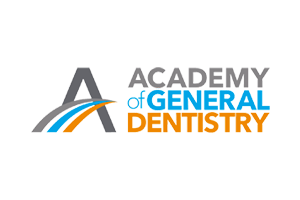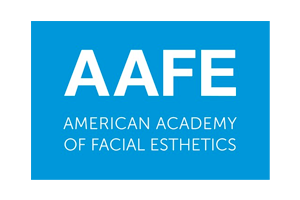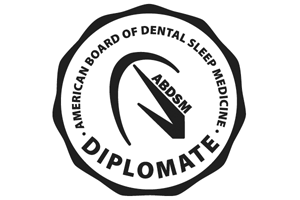Gentle Care
Accepting New Patients | Open Evenings
We’re accepting new patients and can help with dental emergencies. Give us a call or send us an email to book an appointment.
We offer a full range of general, family, cosmetic, restorative, and emergency dentistry.
We always focus on gentle techniques and use advanced equipment to ensure your comfort.
All of our services are priced competitively and many of our services are covered by popular insurance plans.

Dental restorations are sometimes made outside of the oral cavity, and the most common example of these would be a dental crown or a dental bridge. However, there are other, less invasive restorative options available: inlays and onlays.
Think of an inlay or an onlay as an intermediary between a direct restoration, and a crown. They’re fabricated outside of the oral cavity but fit onto the surface of the tooth as a direct restoration would.
You probably have a lot of questions, but don’t worry – at Pearl Dental, we do our best to educate patients about their condition and curate treatment plans to best suit our patients’ wants and needs.
Most of our treatments are covered by popular insurance plans. Give us a call with your insurance details and we’ll help you determine your coverage. After your treatment, we collect payment from you and will help you submit your insurance claim.
No Insurance, No Problem!
All of our treatments are priced competitively and we offer our own in-house dental plans to ensure you can maintain excellent oral health in a cost-effective manner.
We’ve also partnered with Cherry as a buy now, pay-later financing approach.
or call (631) 724-0455

Ask us Anything…
or call (631) 724-0455
The name probably gives it away: a direct restoration is made inside of the oral cavity. The most common example would be a direct amalgam or composite filling. A dentist prepares a tooth surface to receive a direct restoration in a single visit.
An indirect restoration, on the other hand, is made outside of the oral cavity; and takes at least two visits to the dentist’s office. During the first visit, your dentist takes an impression of the oral cavity for complete fabrication in a laboratory. During the second visit, the restoration created in the lab is then cemented onto the prepared tooth surface.
A tooth that has been damaged or decayed would eventually require a restoration. However, whether that restoration is a direct one or an indirect one depends upon the following factors:
If a tooth is damaged or decayed beyond a reasonable extent – that is, the damage wouldn’t allow a filling to hold up inside of the cavity- an indirect restoration is typically recommended.
Direct restorations and dental fillings are often selected for minimally damaged cases, where there is enough natural tooth support to keep the filling firmly inside of the cavity.
In other instances, an indirect restoration is recommended if you’ve already received a direct restoration, but still have recurrent decay.
Break the words down: in-lay, and on-lay: onlays are larger than inlays and are more invasive. An inlay is an indirect restoration that rests inside of the tooth structure, and are mostly limited to pits and fissures – that is, deep within the confines of the tooth. An onlay, on the other hand, is an indirect restoration that rests on the tooth structure. They’re placed over the cusps of the tooth.
Another key difference between the two is their ability to withstand the forces applied on a tooth by an opposing tooth. An onlay has greater load-bearing capacity than an inlay.
Both inlays and onlays distribute occlusal stresses over their surface to keep the damaged teeth from additional stresses.
Dental treatment plans aren’t straightforward – there are several treatment options available. While it might sound daunting, our team at Pearl Dental will guide you through the entire process, help choose the perfect option for your case, and answer any query you have throughout the way.
Our Promise to You
or call (631) 724-0455
You’re the Boss
The first step to better oral health is giving us a call to book an appointment.
During your first visit we will take some X-Rays and give you a tour of your mouth with our intra oral cameras. Then, we’ll learn about your oral health goals and give you any applicable treatment options.
Once you know what is going on inside of your mouth, you make the treatment decisions that are best for you. We will never be pushy or recommend treatment that you don’t need.
or call (631) 724-0455
 Laura Endres2023-09-19I have severe anxiety when it comes to visiting the dentist. Dr. Sonia made me feel so comfortable and at ease! I am very happy that I can now go to the dentist without fear. I cannot recommend this dental practice enough and I would be remiss to not mention her fantastic dental technician..What a team :)
Laura Endres2023-09-19I have severe anxiety when it comes to visiting the dentist. Dr. Sonia made me feel so comfortable and at ease! I am very happy that I can now go to the dentist without fear. I cannot recommend this dental practice enough and I would be remiss to not mention her fantastic dental technician..What a team :) Tj Stanton2023-09-08Sonia is the best! Between chairside manner, efficiency, and kindness there is no other dentist I’d rather go to!
Tj Stanton2023-09-08Sonia is the best! Between chairside manner, efficiency, and kindness there is no other dentist I’d rather go to! Stephanie Knight2023-08-18Wonderful staff. They are friendly and make you feel like you're in good hands.
Stephanie Knight2023-08-18Wonderful staff. They are friendly and make you feel like you're in good hands. Dana Levanti2023-08-03Very professional, friendly and extremely thorough. She explained everything that needed to be done. I highly recommend!
Dana Levanti2023-08-03Very professional, friendly and extremely thorough. She explained everything that needed to be done. I highly recommend! Jerold Dougherty2023-07-18Fantastic service, very attentive. You're made to feel as comfortable as possible. I couldn't recommend them more!!
Jerold Dougherty2023-07-18Fantastic service, very attentive. You're made to feel as comfortable as possible. I couldn't recommend them more!! Joel Spiegel2023-03-14I was very pleased with my experience . All the people I came in contact with- dentist, dental assistant and receptionist were very welcoming as well as informative. The exam was very thorough. I feel that I was well taken care of. Jill Spiegel
Joel Spiegel2023-03-14I was very pleased with my experience . All the people I came in contact with- dentist, dental assistant and receptionist were very welcoming as well as informative. The exam was very thorough. I feel that I was well taken care of. Jill Spiegel Nikki Vinokur2023-02-20Dr. Sonia and everyone at Pearl Dental are always so kind and considerate during my appointments! I always feel so at ease during my routine cleanings and I can always ask any questions I have without feeling embarrassed. I would highly recommend Pearl Dental to anyone in need of dental services.
Nikki Vinokur2023-02-20Dr. Sonia and everyone at Pearl Dental are always so kind and considerate during my appointments! I always feel so at ease during my routine cleanings and I can always ask any questions I have without feeling embarrassed. I would highly recommend Pearl Dental to anyone in need of dental services. Bob Lanfear2023-02-09Dr. Sonia Motwani and her staff are wonderful! She and her assistant Suzanne work seamlessly together. They constantly check on the patient to make sure any discomfort is dealt with quickly and they do superb work.
Bob Lanfear2023-02-09Dr. Sonia Motwani and her staff are wonderful! She and her assistant Suzanne work seamlessly together. They constantly check on the patient to make sure any discomfort is dealt with quickly and they do superb work. Cindy Tietjen2023-02-02Dr. Sonia and the office staff at Pearl Dental are wonderful. From the first visit they work to make you comfortable. Cleaning is thorough, her diagnostics are spot on, and crown replacement a pleasure. Prices are competitive and I look forward to a long dental relationship with Pearl. I highly recommend the practice!Google rating score: 5.0 of 5, based on 23 reviews
Cindy Tietjen2023-02-02Dr. Sonia and the office staff at Pearl Dental are wonderful. From the first visit they work to make you comfortable. Cleaning is thorough, her diagnostics are spot on, and crown replacement a pleasure. Prices are competitive and I look forward to a long dental relationship with Pearl. I highly recommend the practice!Google rating score: 5.0 of 5, based on 23 reviews





Hours
Monday: 9 AM – 6 PM
Tuesday: 9 AM – 6 PM
Thursday: 10 AM – 7 PM
Additional hours are available upon request and availability.